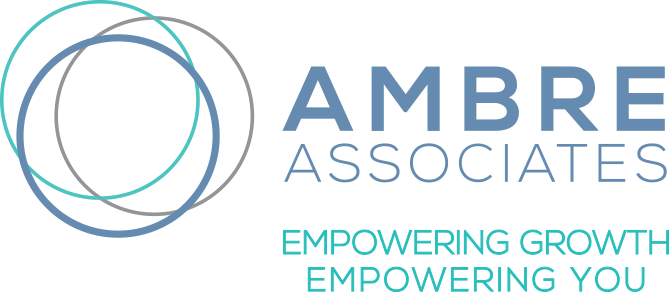Late ADHD Diagnosis in Adults: Challenges and Treatment Options
Attention Deficit/Hyperactivity Disorder (ADHD) is typically associated with children who are diagnosed with an attention disorder. But it’s hardly exclusive to children. Many adults struggle with attentional issues that interfere with their performance, relationships and sense of self.
According to a 2024 report by Forbes, an estimated 8.7 million adults in the U.S. have ADHD. Approximately 2.6% (139.8 million) of adults worldwide have persistent ADHD from childhood, which includes individuals who experienced childhood onset paired with continued ADHD symptoms into adulthood.
But, according to the National Institute of Mental Health, “many adults don't get diagnosed until later in life because a person may not be diagnosed with ADHD until adulthood because teachers or family did not recognize the condition at a younger age … or they managed fairly well until they experienced the demands of adulthood, especially at work.”
Underdiagnosis or misdiagnosis is also impacted by a lack of practitioner knowledge, or at least the inability to keep up with the flood of emerging research about ADHD. Ninety-three percent of psychiatrists report that they've never had any ADHD training, either in their residency or in continuing medical education, whether in children, adolescents, or adults. This means that many physicians are working with a misinformed /outdated understanding of what ADHD can look like — and could be overlooking its signs in their adult patients.
ADHD in Adults
The symptoms of ADHD in adults often mirror challenges associated with other mental health disorders such as depression, anxiety, PTSD and others. These symptoms can include:
trouble sleeping
constant brain fog or trouble concentrating
impulsivity
low self-esteem
difficulties in relationships (at work and in their personal lives)
in some cases, substance abuse or addiction
While there are two basic types of ADHD: a) ADHD hyperactive and b) ADHD inattentive, it’s possible for people to experience symptoms of both (which is ADHD combined type). By adulthood, many people find that the issues related to hyperactivity or restlessness have subsided, leaving them with symptoms of ADHD inattentive type.
Challenges of Adult ADHD
In addition to managing their symptoms, adults with ADHD face a unique set of challenges — especially if their diagnosis comes later in life. Some of the challenges I’ve seen in my clients include:
Reconciling this diagnosis with their childhood experiences
Without the proper diagnosis as a child, they were often made to feel like they were “bad”, doing something wrong, or labeled as “lazy”, “dumb” or “unmotivated.”
These messages get encoded as deeply held emotional beliefs about the self that can take a while to deconstruct and replace with a new, more compassionate narrative.
Reconciling stereotypes/preconceived notions of ADHD with their self-perception
When people think of ADHD, they often conjure images of a “hyper” child who can’t sit still, is acting out or can’t complete a task. The truth is, ADHD shows up differently for everyone, especially across gender and age.
Thus, part of the work with adults with ADHD is helping them understand how various symptoms apply (or don’t apply) to them.
Making decisions about medication
Adults frequently wonder if an ADHD diagnosis means they’ll need to get on medication to manage their symptoms. They have concerns about how they’ll tolerate a new medicine, including its potentially unpleasant side effects.
The reality is that medication doesn’t have to be the only answer or THE answer. Several alternative approaches can be used in place of (or to supplement) medication.
For example, many people benefit from executive functioning exercises, training and strategies they can draw upon when they feel overwhelmed or frustrated.
Some people find themselves able to manage their ADHD symptoms by making adaptive lifestyle changes, creating new habits or simply putting boundaries in place to minimize external distractions.
Psychotherapy can help adults understand their condition, work on building self-compassion and come up with individualized strategies to manage their ADHD. One advantage of therapy is that it takes a holistic approach to treating ADHD in the broader context of the client’s overall mental health.
How Therapy Can Help Adults with ADHD
Every patient comes to therapy with a unique set of experiences and needs. Thus, there is no one-size-fits-all program for treating ADHD in adults. There are, however, some common themes a therapist can address:
For starters, a therapist will work with you to establish therapeutic goals that make sense given your life and work circumstances. Sometimes, they’ll dig a little deeper than what might appear to be obvious on the surface.
While helping you identify areas in which you can use support, they’ll also guide you through the process of developing self-compassion, self-acceptance and self-confidence. A therapist will help you take a whole-life approach to managing your ADHD symptoms and come up with practical strategies for you to use at work, at home and in your relationships.
You may find yourself wishing you had been diagnosed earlier in your life; therapy can provide a safe space for you to address and work through those feelings.
Accepting your past is an important first step in creating the future you deserve. By shifting your perspective from blame to compassion, you can make the most of the treatment you wish you had as a child.
You don’t have to go it alone.
If you’re interested in learning more about individual psychotherapy, adolescent psychotherapy, child psychotherapy, parenting support, psychoanalysis or couples therapy, please contact us by submitting this form, or by phone at 847-729-3034. We’ll be happy to answer any questions you might have.



